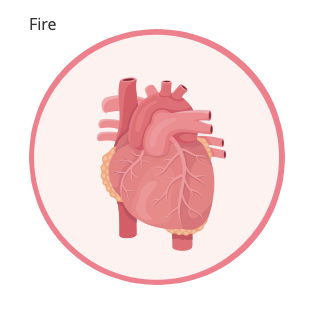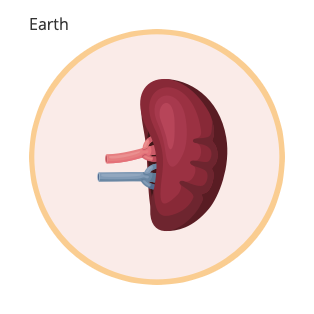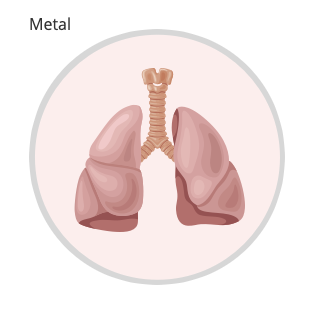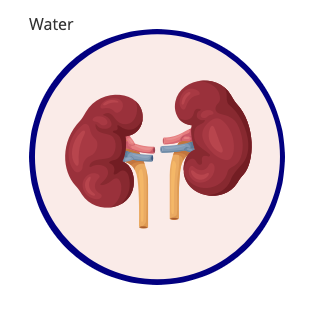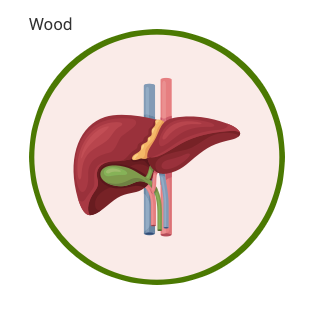QiGong
TL;DR Let’s call ‘Qi’ (pronounced “chee”), energy for a moment and say ‘Gong’ (pronounced “gung”) is cultivation. That said, QiGong is the practice of cultivating one’s own energy.
There are three forms of Qigong;
- Medical
- Martial
- Spiritual
I’ll be discussing Medical QiGong as outlined by Traditional Chinese Medicine (TCM). Specifically, 5 element lineage QiGong. Martial QiGong is the practice of Tai Chi and Spiritual QiGong, I can’t speak to as I have little or no experience with it. But, let’s go just a little deeper into what (medical) QiGong is because the explanation above is adequate ... but a little too simplistic.
In today’s society, good health is judged by a trim fit and lean physical body. For the most part, this can be a good way of assessing somebody’s health but a better way is to focus on the health of the internal organs. We’ve all seen the images of body builders with astounding physiques but in some cases they arrive at that physique though performance enhancing drugs – steroids. This is not meant as a searing indictment of body builders. I merely use it as an example to stress how the outside can disguise what’s really happening inside. Exercise is great if not essential to one’s good health but better to make sure the organs inside are fit and healthy.
In TCM, good health is arrived at through diet, exercise and proper management of one’s emotions. This is where I lose a lot of people, especially men. You see, we’re simply not taught how to deal with our emotions, our lizard brain takes over and we get angry. Some of us are more binary than others. There’s happiness, angriness and ordinariness and nothing in between so we operate according to a limited spectrum of emotions. But the human body (yes, mens too) has a whole slew of emotions which if left unchecked and dishonored get out of balance and cause all sort of psychological and physical imbalances. Enter QiGong. Thousands of years old and devised to align breath, movement and awareness for healing, spirituality and martial arts.
A discussion of Qigong starts with an understanding of Qi. Everything in the universe has qi. It’s life force. Without life force, things are said to be dead. Your life force is the series of vibrations which animate us. Even a rock has its own vibration. It’s just very slow, so it gives the appearance of being ‘dead’ or inanimate but according to TCM, it is living.
When our Qi flows smoothly and steadily, we feel energized and healthy. When we are tired or worse, feel ill our Qi is not flowing well, it may be blocked or inhibited. Qi flows along paths in the body called Meridians. In TCM each Meridian is associated with specific internal organs.
When Qi is stagnant we get out of balance. We sleep poorly for instance or we exhibit uneasiness and mood swings. If left unchecked it can have far greater and more detrimentally reaching manifestations such as physical illness and medical disorders.
Analogies might help explain the notion of meridians and TCM. We have 8 extraordinary meridians and 12 ordinary ones. the belt meridian which as the name suggests goes around the waist is the only one which travels horizontally within the body. If we consider the meridians to be rivers which flow into lakes (the Yin/Yang organs), then these lakes drain into the seas or oceans. The latter are the body's primary energy centers and are known as the Dan Tians in TCM. The lower Dan Tian is the largest reservoir of energy. When we pull energy in from the earth or down from the heavens we let it go where it's needed most but we always finish a Qi cleansing practice by storing any excess energy in our lower Dan Tian - located in our lower abdomen. The middle Dan tian is located at chest height and the Upper is located between the eyes and a little up...our so called third eye.
More on the 5 elements can be explored below. In TCM our Yin organs are more highly prized and for this reason they are often more of a focus. Each organ duo has its own set of Qi cleansing exercises which I recommend exploring by watching Chris Shelton's YouTube videos. A good place to start is his 30 days QiGong to Better Health challenge.

